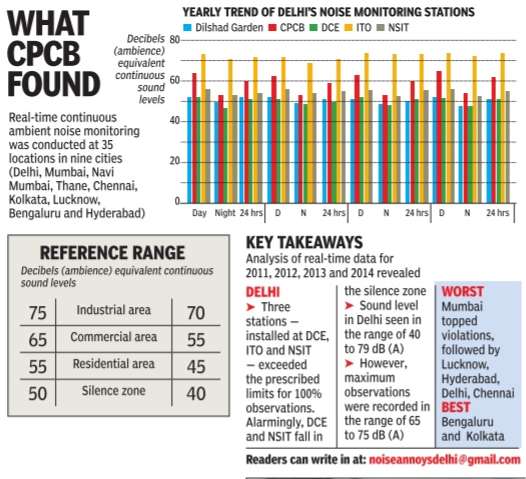Noise Pollution: India

This is a collection of articles archived for the excellence of their content. |
The state-wise position
Delhi
The Times of India, June 9, 2016
Noise pollution is a killer too
The busy ITO junction in Delhi registers around 74 decibel (dB) of sound on a typical day , almost 10db over the limit for commercial areas. The level near Acworth Hospital in Mumbai's Wadala is usually 70dB, almost 20dB more than what's permitted in such a zone. Noise pollution is now linked to many ailments from irreversible hearing loss to anxiety attacks to hypertension and heart disease. Considering that every 10dB increase makes the sound twice as loud to the human ear, the health implications for a regular commuter are serious. The situation is so bad in cities that ENT specialists now say a 20dB loss in hearing among urbanites is “normal“.
That's the impact of the constant onslaught of noise on our ears, say experts.It's a subject on which there is limited research and little understanding.
“People don't realise that noise is the hidden enemy of man. It affects your en tire body , said Dr Yeshwant Oke, who brought noise pollution into the public consciousness when he filed the first noise pollution-related petition in the Bombay courts in 1985.
Sumaira Abdulali of Awaz Foundation echoes a similar sentiment: “People will adjust to living next to a railway station despite the disturbance caused by loud announcements and honking. Loud music is one of the leading cause of police complaints the world over, including India, but we never think too much about the harm of constant honking by cars on the roads just outside their house. Clearly , the main sources of noise in the main urban centres are vehicles,